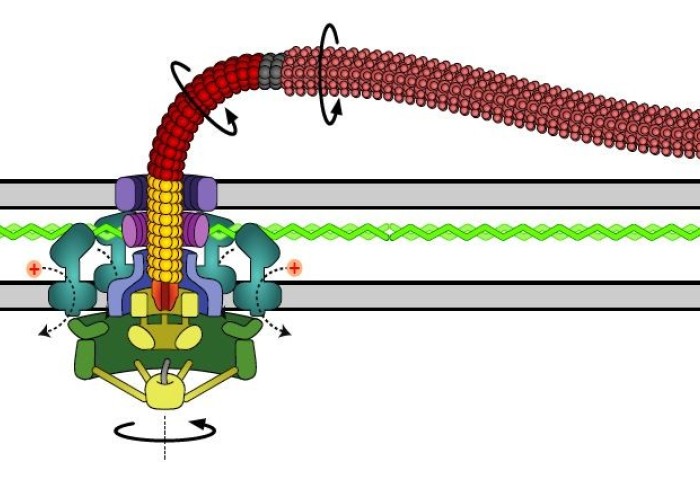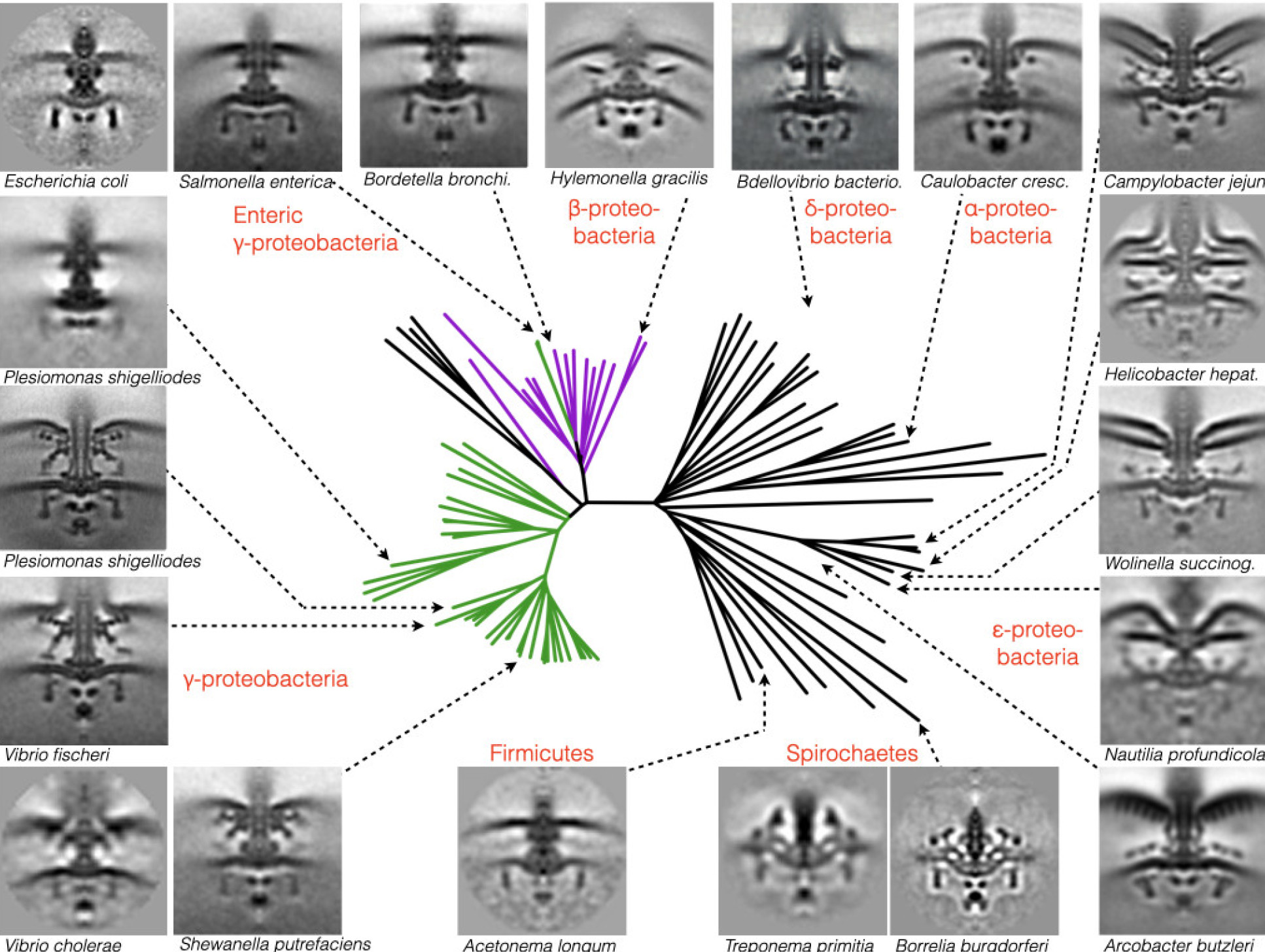Team investigating the evolution of bacterial ‘tails’ wins prestigious grant

An international team, led by Imperial’s Dr Morgan Beeby, has been awarded a prestigious Human Frontiers Science Program grant.
The team, from the UK, France, Germany and New Zealand, have been awarded nearly $1.4m over three years to investigate the evolution of the flagellum – the ‘tail’ that bacteria use to move.
The dream would be to do with flagellar motors what Darwin did with Finches in the Galapagos. Dr Morgan Beeby
The flagellum is described as one of the marvels of cellular biochemistry. It is a highly efficient, self-assembling molecular motor that bacteria use to propel themselves. For some bacteria, like Salmonella, the flagellum allows them to swim through our guts, causing diseases like food poisoning.
For evolutionary biologists, the flagellum it is an enduring mystery. This ‘molecular machine’ consists of many different parts that are all essential for the flagellum to work. How can gradual, Darwinian evolution build such a structure if not by inventing all necessary parts at once?
Rewinding evolution
Dr Beeby and the team were awarded a prestigious Human Frontiers Science Program (HFSP) grant to answer this question, in a project titled ‘Darwin rwinDa: rewinding and rerunning evolution to study innovation in action’. The group will study how a particular group of bacteria evolved an unusually powerful flagellum and, in the process, acquired many new motor components.

Dr Beeby said: “Our vision is to create a visually detailed history of how this machine evolved step-by-step, similar to how we can follow the evolution of the vertebrate eye or limb through their different evolutionary stages in the fossil record. Except that in this case, there are no fossils of this incredibly tiny machine.”
Instead, the team will hunt for clues of how it evolved in the genomes of different microorganisms alive today. They then plan to image the flagellum directly inside cells of bacteria that preserve different stages of its evolution.
Cutting-edge, risky research
The team will also go out and hunt for bacteria that contain ‘living fossils’ of the flagellum in far out of the way places, like black smokers at the bottom of the ocean. This, the team hopes, will finally reveal how evolution created this famously complex molecular machine. “The dream would be to do with flagellar motors what Darwin did with Finches in the Galapagos,” added Dr Beeby.
HFSP’s collaborative research grants are given for a broad range of projects under the umbrella theme ‘Complex mechanisms of living organisms’. The Program funds cutting-edge, risky projects and it is the only program that supports international teams of scientists with laboratories in different countries.
The members of the team are: Morgan Beeby (Imperial College London), Georg Hochberg (MPI Marburg, Germany), Francesco Pedaci (CNRS Montpellier, France) and Craig Cary (University of Waikato, New Zealand).
Article text (excluding photos or graphics) © Imperial College London.
Photos and graphics subject to third party copyright used with permission or © Imperial College London.
Reporter
Hayley Dunning
Communications Division